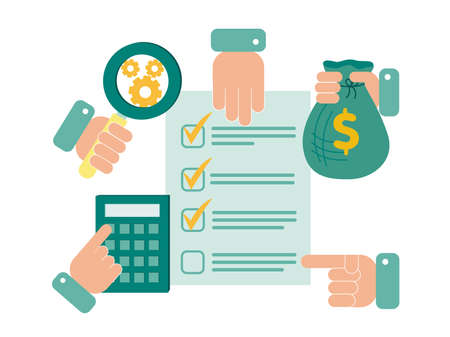Understanding Remortgaging and When to Consider It
Remortgaging is a common financial move for many homeowners in the UK who want to make their mortgage work harder for them. Essentially, remortgaging means switching your current mortgage deal to a new one, either with your existing lender or a different provider. This process doesn’t involve moving home; instead, it’s about finding a better fit for your personal circumstances and financial goals.
There are several key reasons why people in the UK choose to remortgage. One of the most popular motivations is securing a better interest rate. When your current fixed or tracker deal ends, you’ll likely be moved onto your lender’s standard variable rate (SVR), which tends to be higher. By shopping around for a new deal, you could reduce your monthly payments and save money over time—a real win for savvy savers!
Another common reason is debt consolidation. If you have multiple debts, such as credit cards or personal loans, remortgaging allows you to roll these into your mortgage. This can simplify your finances and potentially lower your overall monthly outgoings, though it’s important to consider the long-term costs and seek advice if needed.
Some homeowners also look to remortgage to release equity from their property. This means borrowing more than you currently owe on your mortgage and receiving the extra cash as a lump sum—perhaps for home improvements, helping family members onto the property ladder, or funding other big life events.
Whatever your reason, understanding when to consider remortgaging is crucial. Keep an eye on when your existing mortgage deal is due to end and review the market regularly to ensure you’re not paying more than you need to. Timing is everything, so don’t leave it until the last minute; start exploring your options three to six months before your current deal expires for a smoother transition.
2. Researching and Comparing Mortgage Deals
When it comes to remortgaging in the UK, doing your homework is crucial for finding the best deal. Start by exploring comparison websites such as MoneySuperMarket, Compare the Market, or Uswitch. These platforms allow you to filter offers by interest rates, fixed or variable terms, lender fees, and early repayment charges. Alternatively, you could work with a mortgage broker who understands the UK market and can access exclusive deals not always available directly to consumers.
Key Factors When Comparing Remortgage Products
| Factor | What to Look For | UK-Specific Terms |
|---|---|---|
| Interest Rate | Lowest possible rate; consider fixed vs. tracker rates | APR (Annual Percentage Rate), SVR (Standard Variable Rate) |
| Fees | Arrangement fees, booking fees, valuation fees, legal costs | Product fee, exit fee, early repayment charge (ERC) |
| Term Length | Shorter fixes can be cheaper but may require more frequent remortgaging | 2-year fix, 5-year fix, lifetime tracker |
| Lender Flexibility | Portability, payment holidays, overpayment options | Offset mortgages, porting your mortgage |
| LTV Ratio | The lower your Loan-to-Value ratio, the better the rates available to you | LTV (Loan-to-Value) |
How to Use Comparison Sites Effectively
Comparison sites make it easy to see a wide range of remortgage products side by side. Enter your current mortgage balance, property value, and preferred term length to tailor the results. Pay attention not only to the headline rate but also to any additional costs listed in the terms and conditions.
The Role of Mortgage Brokers in the UK Market
If sifting through dozens of deals feels overwhelming or if your circumstances are complex (such as self-employment or poor credit history), a mortgage broker can be invaluable. They can explain jargon like “product transfer” or “affordability assessment,” offer tailored advice based on your financial situation, and often help speed up the application process.
By taking the time to research and compare thoroughly—whether independently or with professional help—you’ll increase your chances of securing a remortgage that saves you money both now and in the long term.

3. Preparing for Your Remortgage Application
Before you dive into the remortgaging process, it’s essential to get your paperwork in order. Lenders in the UK will expect you to provide a range of documents and information to support your application. Taking time to prepare not only speeds up the process but also increases your chances of being approved for the best deals.
The Key Documents You’ll Need
- Proof of Income: This usually means recent payslips (typically the last three months), P60s, or, if you’re self-employed, SA302 forms and tax year overviews from HMRC. Lenders want assurance that you can meet your monthly repayments.
- Identification: A valid passport or driving licence is standard, along with proof of address such as a recent utility bill or bank statement (usually dated within the last three months).
- Current Mortgage Details: Have your latest mortgage statement handy, which outlines how much you still owe and any early repayment charges that may apply.
Other Information That Can Help
- Details of Debts and Outgoings: Be prepared to share information about credit cards, loans, and other financial commitments. Lenders assess your affordability based on your monthly outgoings as well as income.
- Property Information: Some lenders may request an up-to-date valuation or details about your home’s construction type and condition.
Tips for Improving Your Eligibility
- Check Your Credit Report: Before applying, review your credit file with UK agencies like Experian or Equifax. Fix any mistakes and settle outstanding debts where possible.
- Avoid New Borrowing: Steer clear of taking out new loans or credit cards just before applying, as this can impact your affordability assessment.
- Save for Fees: Some lenders charge arrangement or valuation fees; having savings set aside shows financial stability and ensures you can cover these upfront costs.
Summary
Getting organised before applying for a remortgage puts you in the best possible position. By gathering all necessary documentation and tidying up your finances, you’re showing lenders that you’re a responsible borrower – making it more likely that you’ll secure a competitive remortgage deal suited to your needs.
4. Submitting Your Application and Passing Credit Checks
Once you’ve compared deals and chosen the right remortgage product, it’s time to submit your application. Here’s a step-by-step guide on what to expect during this crucial phase:
The Application Process Step-by-Step
- Gather Your Documents: Make sure you have proof of income (like payslips or SA302 forms for self-employed), bank statements, ID, and details of your current mortgage.
- Complete the Application Form: Whether applying directly with a lender or through a broker, you’ll need to provide personal details, employment information, and property specifics.
- Lender’s Assessment: The lender will review your finances, outstanding debts, monthly outgoings, and the value of your property.
- Credit Check: A hard credit search will be carried out to assess your creditworthiness and flag any issues that might impact approval.
- Valuation of Property: Most lenders arrange a valuation to confirm the property’s worth, which can affect the loan-to-value (LTV) ratio offered.
What Lenders Look for in the UK
| Lender Criteria | Description |
|---|---|
| Income Stability | Consistent employment or reliable self-employment income |
| Credit History | A good track record of repaying debts on time |
| Existing Debts | Level of current debt versus income (debt-to-income ratio) |
| LTV Ratio | The percentage of your property’s value you want to borrow—lower LTV often means better rates |
| Affordability | Your ability to afford repayments if interest rates rise or circumstances change |
How Credit Checks Can Impact Your Approval Chances
Lenders run a credit check as part of their decision-making process. In the UK, even a single missed payment can lower your score and affect your chances of being approved for a competitive remortgage deal. If you have multiple applications in a short time frame, it can also negatively impact your score. To boost your chances:
- Check your credit report with agencies like Experian or Equifax before applying.
- Avoid taking out new credit cards or loans just before applying for a remortgage.
- Ensure all bills are paid on time in the months leading up to your application.
- If possible, reduce existing debts to improve your debt-to-income ratio.
This part of the remortgaging journey is where preparation pays off—you’ll increase your odds of success by making sure everything is in order before hitting ‘submit’ on that application form.
5. Valuation, Legal Work and Receiving an Offer
Once your remortgage application is submitted, the next stage is all about checks, legal processes, and waiting for the official offer. Here’s a clear step-by-step look at what happens next:
Property Valuation
Your new lender will usually arrange for a valuation of your property. This helps them confirm that the property is worth enough to cover the mortgage amount you’re requesting. Some lenders offer free valuations as part of their remortgage deals, but it’s always wise to double-check whether there are any fees involved. The valuation could be a simple desktop assessment or a physical inspection depending on your circumstances and the lender’s requirements.
Legal Work by a Solicitor (Conveyancing)
The legal process—called conveyancing—is handled by either a solicitor or a licensed conveyancer. If your new lender offers “free legals” as part of the deal, they’ll appoint their own solicitor to act on your behalf. Otherwise, you can choose your own, but make sure they’re experienced in remortgaging. Your solicitor will handle essential tasks such as checking the title deeds, dealing with the Land Registry, ensuring there are no legal issues with the property, and liaising with both your current and new lenders to arrange for repayment of your old mortgage.
Receiving Your Formal Remortgage Offer
If everything checks out—from your credit score to the property value—the lender will send you a formal remortgage offer. This document outlines all the details: interest rate, terms, monthly payments, and any conditions attached. Take time to review this carefully; if you have any questions or concerns, raise them with your broker or solicitor before accepting. Once you’re happy, you’ll sign the necessary paperwork to move towards completion.
What to Expect Next
This stage may involve some waiting—solicitors need time to complete their checks and coordinate between all parties involved. Keeping in regular contact with your solicitor can help ensure things progress smoothly and quickly so you can move on to completion without unnecessary delays.
6. Completion Day and Moving to Your New Mortgage
Completion day marks the official switch to your new mortgage deal—a key milestone in the remortgaging process. Here’s what you can expect and some practical tips to make sure you get the most from your new arrangement.
How the Switch Happens on Completion Day
On completion day, your solicitor or conveyancer will coordinate with both your old and new lenders. The outstanding balance on your current mortgage is paid off using funds from your new lender. This process is typically handled behind the scenes, so you don’t need to do anything yourself. You’ll receive a final statement from your old lender confirming the closure of that account, while your new lender will send you details of your fresh mortgage agreement.
What to Expect During the Transition
The transition is usually seamless, with no disruption to your home ownership. Most people don’t notice any change except for receiving new payment instructions. Make sure you cancel any direct debits linked to your old mortgage (once it’s officially closed) and set up payments for the new one. Double-check all details and keep an eye out for letters or emails from both lenders during this period—just in case further information is required.
Money-Saving Tips for Your New Mortgage Deal
- Review Your Budget: Update your monthly budget to reflect any changes in payment amounts due to your new interest rate or term.
- Set Up Overpayments: If your new deal allows penalty-free overpayments, consider paying a bit extra each month—even £50 can knock years off your mortgage and save thousands in interest.
- Monitor Interest Rates: Keep an eye on the market; if rates drop significantly in future, you may want to remortgage again when it’s financially sensible.
- Avoid Lifestyle Inflation: If your new monthly repayments are lower, resist the urge to increase spending elsewhere—redirect those savings into an emergency fund or ISA.
Final Steps
Keep all paperwork from both lenders safe, including completion statements and new mortgage terms. Set reminders for when your new fixed or introductory rate ends so you can start shopping around well before reverting to a standard variable rate. With these practical steps, you’ll maximise the benefits of your remortgage and stay firmly in control of your finances.


